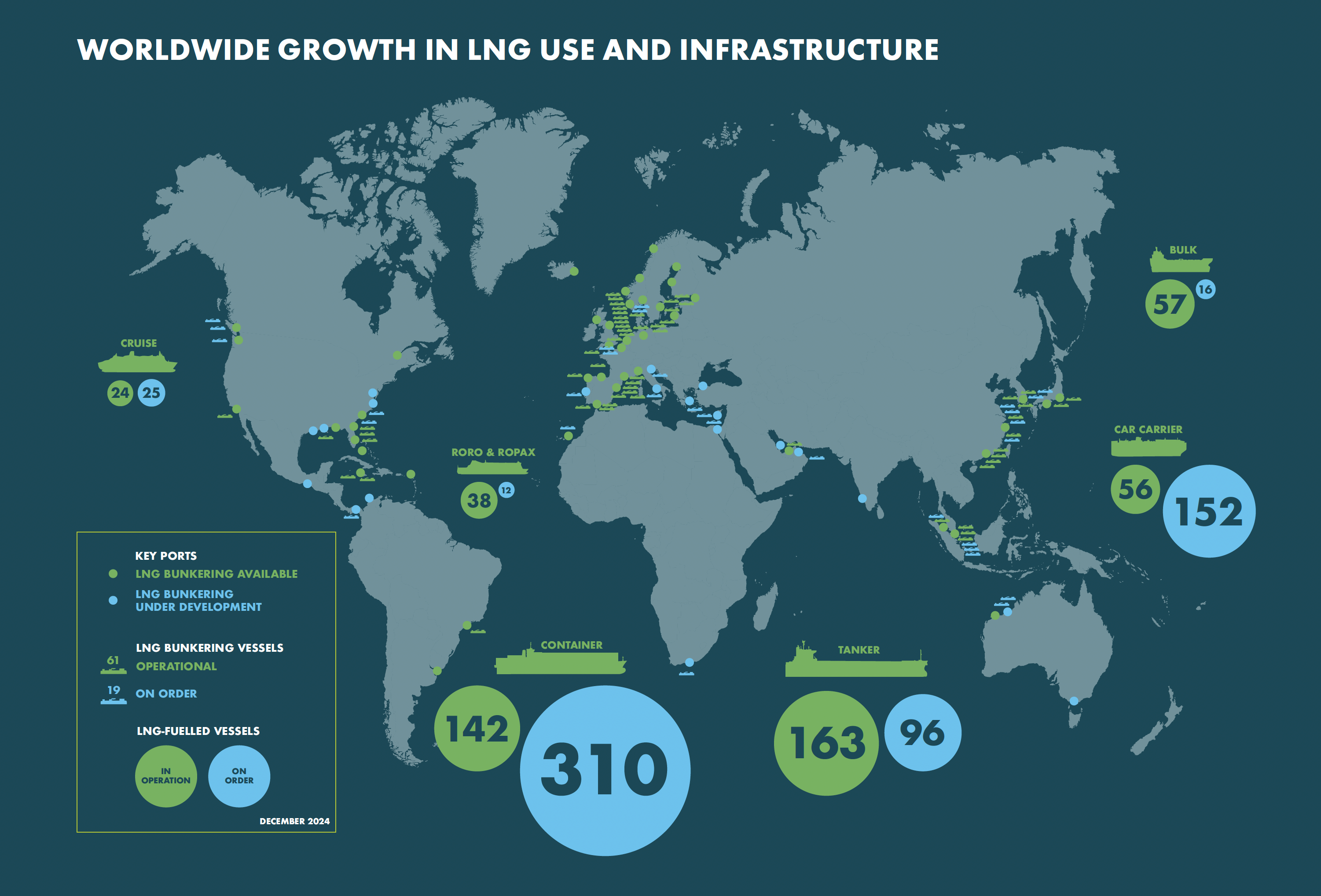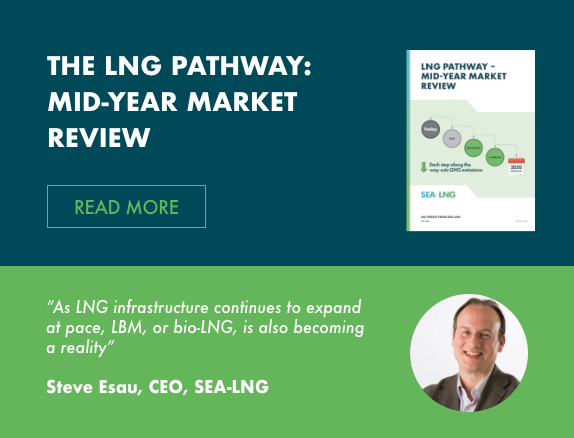Bunkering
LNG infrastructure is growing rapidly. It can be bunkered at all key ports today, including major marine fuel bunkering hubs.
The bunkering infrastructure to support LNG as a marine fuel continues to grow. It can now be delivered to vessels in around 200 ports, including most of the main bunkering ports, with some 80 ports in the process of facilitating LNG bunkering investments and operations.
There has been a dramatic scaling up of ship-to-ship bunkering. In early 2019 there were just six LNG bunkering vessels around the world. By mid-2025, there were 62 in operation with a further 30 on order.
The latest global information on LNG bunkering ports and bunker vessels can be found on SEA-LNG’s Bunker Navigator.
LNG bunkering infrastructure can be used to supply zero-carbon fuels in the form of liquefied biomethane (bio-LNG) or liquefied e-methane (e-LNG), with little or no modification, so enabling the transition to a decarbonised shipping industry.

